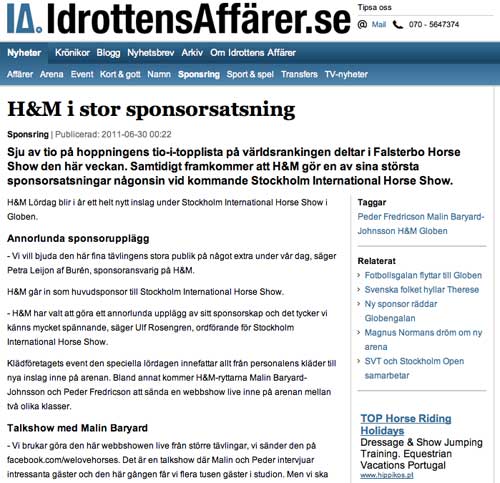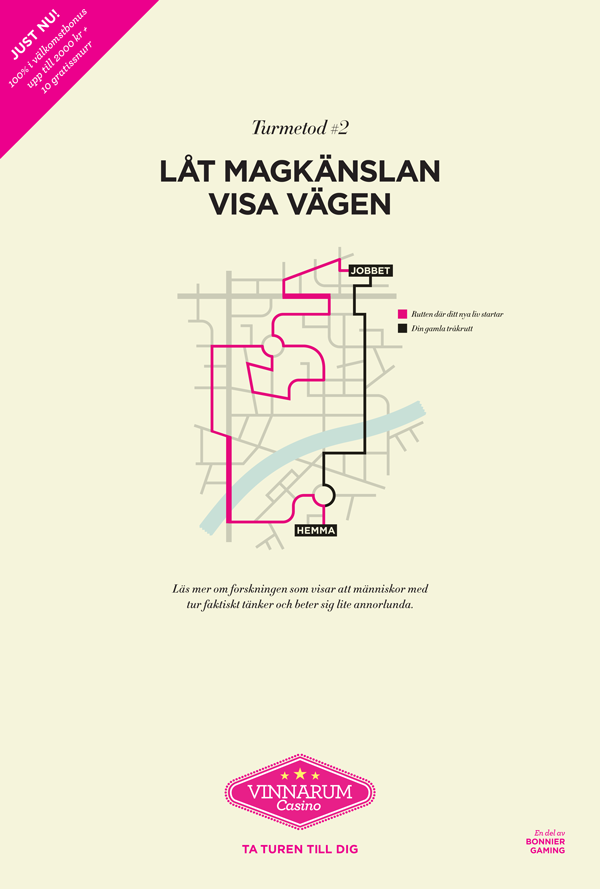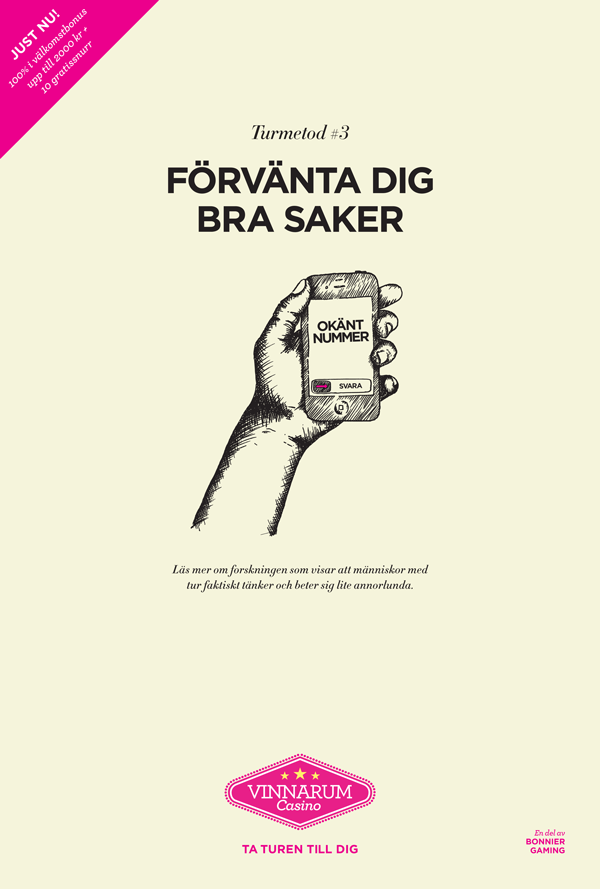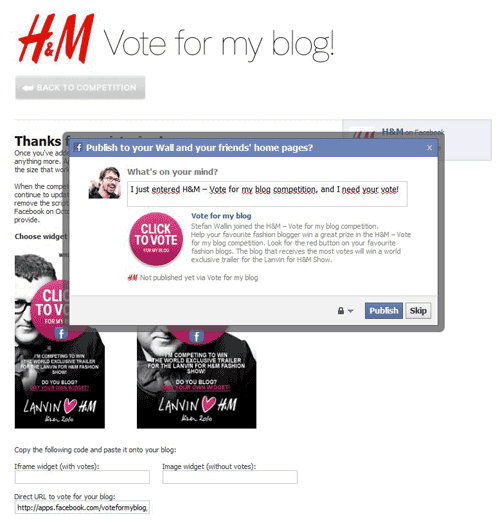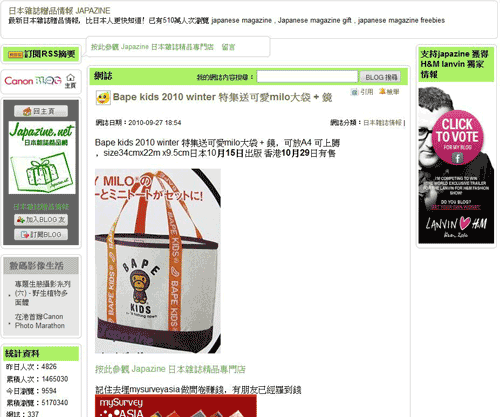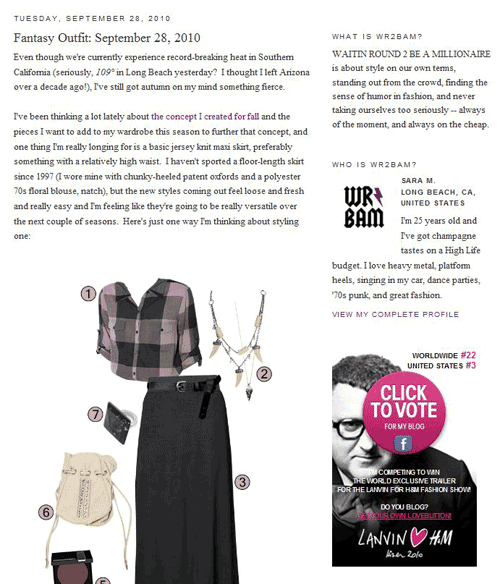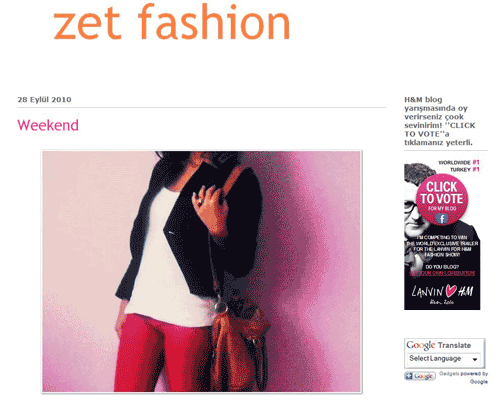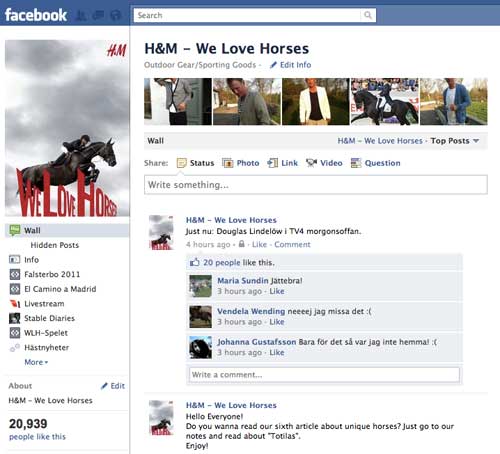
Facebook has provided a great new way for brands to connect with people. But why you should connect, with what goal in mind and how to do it can be tricky and the answers are different for for every brand.
When we got a brief from H&M, more specifically the sponsor part of H&M, we were asked to conceptualize, start and help get off the ground, a blog featuring two long time H&M sponsored riders; Malin Baryard and Peder Fredricson. A good brief with a sound thought behind it given the massive interest in horses and horse riding amongst, primarily, young girls and teenagers. Exactly where H&M start selling their clothes. Clothes these young women can afford. Now they wanted to connect with them better, not just around the events but all through the year.
To make a long story short, after a period of netnography (on some of the very few active and interesting communities that existed – the latter opinion later confirmed in interviews), observational studies during a long weekend at the Göteborg Horse Show coupled with a number of visits to horse riding schools, stables and plentiful interviews – it was pretty clear to me. People who love (think The-Beatles-crazy-fan-screaming type of love) the two riders are closer to 7 than 15, meaning blogs haven’t really entered their world yet. The 15+ year old horse riding fans on the other hand, aren’t that crazy about these two riders. Why? Because their interest covers so much more; the whole horse riding circus. When our riders aren’t doing very well, or when they’re not participating in a certain event, the horse riding circus doesn’t stop. So looking at this from a larger context and bigger meaning perspective, what we had to do was capture the interest of the older group interested in horse riding rather than two riders, but at the same time give them a prominent and important role. Grab a bigger piece quite simply.
Where we would do this was obvious, and it’s not a blog. We created the very descriptive facebook page We Love Horses, brought to fans by H&M and (at least for the time being) headed up by our two riders and their bigger team.
The trick is to start small but have an idea and a plan for how it can develop. But never as fixed as to not be able to deviate or change the plan based on community input. It’s about high and low. Simple everyday activities that asks for participation and comments, updates from the life of a professional rider, quizes, educational articles on horse riding techniques, injuries and nutrition etc. Stuff that provides real value to these people. In our case coming from some of the top experts in the industry working with our professional riders, including the much looked up to stable girls who handle the day-to-day caring for the horses. The girl everyone wants to be, in case they don’t make it onto the horse riding circus themselves. Those are the lows, meaning everyday things.
The highs require some more exiting ideas such as competitions, participatory content generation, live streaming from events where no media go, behind the scenes photos and live-tweeting from the riders and interactive games even.
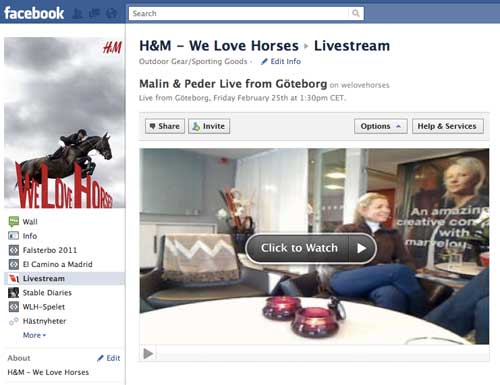
A web show hosted by our sponsored riders covering the whole industry.
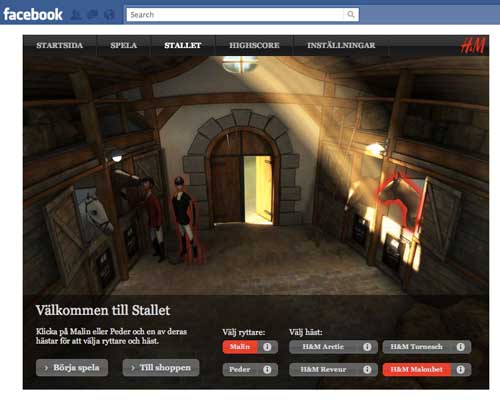
A flash based horse riding game created for the We Love Horses fans to compete against each other.
Brands on Facebook is not a campaign
Brands setting up a Facebook presence sounds really simple, it’s just a Facebook page and a bunch of stuff. That’s exactly the important point to be made; setting these things up from a technical perspective is easy. But when it comes to launching a social media initiative the harder part is the organizational implications. In this case, get our riders up to speed with twitter, posting pics, mobile camera interviews behind the scenes. And that goes for the whole team. Will they be up for it? Do they understand the long-term engagement? Social media, unless it’s a short lived campaign (which often is not a good idea), is about managing a program. It’s about having long-term content strategies and never ending ideas and activities. It’s not a campaign, it’s a program.
Update 2011 – An example of how We Love Horses is used as the primary platform for behind the scene material, live streaming from events often not covered by media, as well as the place for the most up-to-date news from major horse riding venues. Something that got some coverage in 2011 when H&M sponsored the Stockholm International Horse Show.
